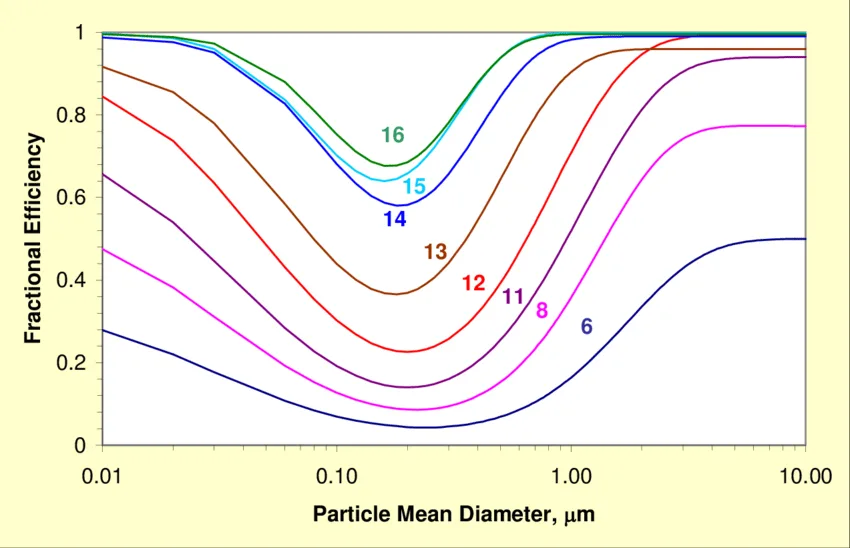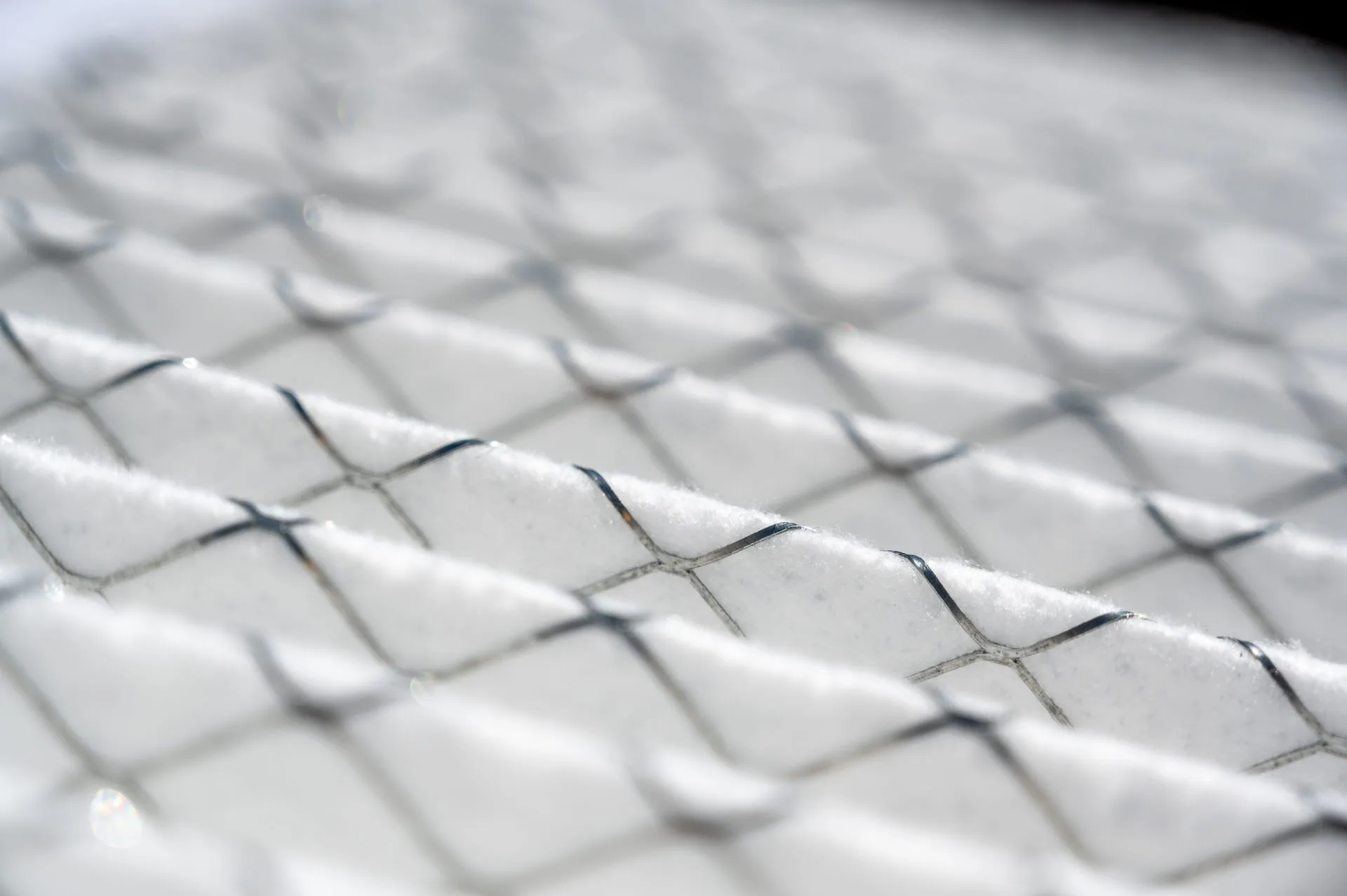A Minimum Efficiency Reporting Value (MERV) rating is a measurement scale that indicates how well an air filter removes particles from the air. The American Society of Heating, Refrigerating, and Air Conditioning Engineers (ASHRAE) developed the MERV rating in 1987.1
Filter efficiency explained.
What does a MERV rating measure?
- MERV ratings measure how well a filter traps particles between 0.3 and 10 microns in size
- A higher MERV rating means the filter is better at trapping particles
What can MERV ratings help with?
- MERV ratings can help you compare the performance of different filters
- MERV ratings can help you choose the right filter for your home
What types of particles can MERV ratings help remove?
- Dust mites, pollen, pet dander, mold spores, smoke, bacteria, and viruses
What are some examples of MERV ratings?
- MERV 1–6
Basic fiberglass filters that catch lint, dust, and pollen - MERV 7–10
Pleated filters that catch dust mites and mold spores - MERV 11–12
High-efficiency filters that catch pet dander, smoke, and sneezed particles - MERV 13+
Filters that catch bacteria and viruses, and are often used in medical applications
The challenges of filtration.
Filters, regardless of their MERV rating,2 have a significant weakness in capturing ultrafine particles, specifically those between approximately 0.1 and 0.4 µm.
High Efficiency Particulate Air (HEPA) filters are known for their high efficiency, removing at least 99.97% of 0.3-micron particles (a common size used in testing). However, the most difficult particle size to filter might be a bit smaller than 0.3 microns, meaning HEPA filters might be slightly less effective at capturing those specific particles. Think of it like trying to catch different sized balls with a net – some smaller balls might slip through easier.
Counterintuitively, these filters are actually more effective at capturing even smaller particles (e.g., 0.01 µm) than they are at capturing particles 10 to 40 times larger (0.1 and 0.4 µm, respectively), before their efficiency increases again for larger particle sizes. This performance gap has been documented in research for at least the past 20 years.
However, simply swapping out your current filter for a HEPA filter in your existing HVAC system is usually not possible. HEPA filters create more air resistance, which can damage systems not designed for them. Plus, they need special racks and airtight seals to prevent air from bypassing the filter. 3
Composite of all MERV filter models, based on initial conditions. 4

Numbers in graph represent MERV values
Sources:
- American Society of Heating, Refrigerating and Air-Conditioning Engineers (ASHRAE). “Debunking Myths About MERV, Air Filtration.” ashrae.org, Accessed February 12, 2025. https://www.ashrae.org/news/ashraejournal/debunking-myths-about-merv-air-filtration. ↩︎
- Environmental Protection Agency (EPA). “What is a MERV Rating?” epa.gov, Accessed February, 12 2025. https://www.epa.gov/indoor-air-quality-iaq/what-merv-rating. ↩︎
- American Society of Heating, Refrigerating and Air-Conditioning Engineers. “Filtration and Disinfection.” ASHRAE, accessed February 12, 2025. https://www.ashrae.org/technical-resources/filtration-disinfection. ↩︎
- Kowalski, W.J., and W.P. Bahnfleth. 2002. “MERV Filter Models for Aerobiological Applications.” Air Media, Summer, 1. Accessed February 12, 2025.https://www.researchgate.net/figure/Composite-of-all-MERV-filter-models-based-on-initial-conditions_fig3_237558312. ↩︎
